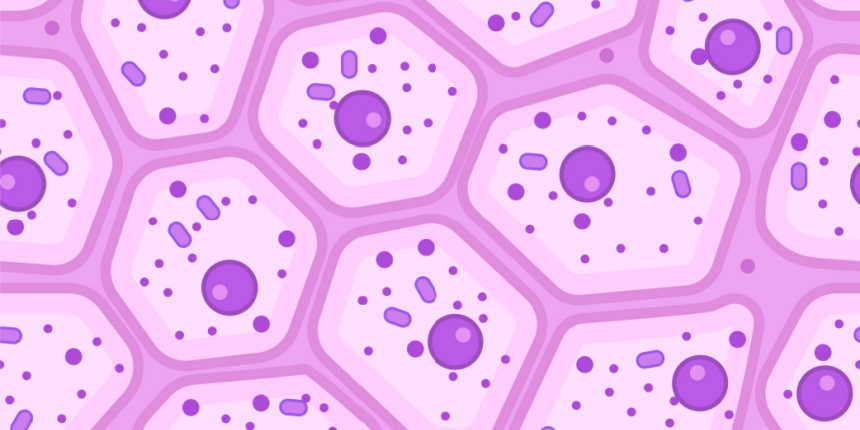How Many Tissues Are There In A Human Body?
Tissue is usually used to describe a group of cells functioning together. Basically, there are four types of tissues in the human body. These classifications are based on the functions taken on by a particular group of cells. The impact of any injury or destruction can be identified by looking at the histology of the tissues. These different types of tissues include:
This Story also Contains
- Connective Tissue
- Epithelial Tissue
- Muscular Tissue
- Nervous Tissue
- Examples

Connective tissue
Epithelial tissue
Muscle Tissue
Nervous Tissue
Connective Tissue
Connective tissue is a type of tissue that helps in the connection of cells and organs. These help bind different substances together in order to function in a systematic manner. The term connective tissue was coined by the scientist Johannes Peter Muller. These tissues also help in the protection, support, and integration of all body parts. This can be again divided into three types: loose connective tissue, dense connective tissue, and specialised connective tissue. The loose and dense connective tissue together forms the connective tissue proper. Whereas specialised connective tissue consists of reticular connective tissue, adipose tissue, cartilage, bone, and blood.
Epithelial Tissue
This is the tissue layer that acts as an epithelium or sheet of tissues at the outermost layer of the human body. These are also found in the lining of internal cavities and passages, as well as in the formation of certain glands. There are four different types of epithelial tissue: simple squamous, simple cuboidal, simple columnar, and pseudostratified. The simple epithelial tissue as its name suggests is a thin layer of the cell. Squamous cells are a flat layer of cells usually found in the alveoli of the lung. Cuboidal cells are cube-shaped cells protecting the linings of sweat glands and salivary glands. Columnar cells are elongated cells found in the pharynx and sex organs. Pseudostratified cells are columnar epithelial cells whose nuclei stay at different positions. These are found in fallopian tubes.
Muscular Tissue
This is the type of tissue that can be excited and can respond to the stimulus generated. These can also contract and relax. According to the different abilities of these tissues, which are present at a particular place, these tissues are classified as skeletal muscle, smooth muscle, and cardiac muscle, which is present in the heart. These three muscles are classified based on whether their activity is voluntary or involuntary. Skeletal muscle is a voluntary muscle, whereas the rest are involuntary in nature. The skeletal muscle can be again classified into Type I slow switch and Type II fast switch muscles.
Nervous Tissue
Nervous tissue, as the name implies, consists of nerves that are also excitable. This nervous tissue allows the transportation of messages or stimuli (electrochemical signals) as nerve impulses. Any other function or movement in the human body occurs as a result of nerve impulses. Nervous tissue is divided into two types: neurons and neuroglia. These cells or neurons function with the action potentials they receive and transmit. Based on the functions they perform the neurons can be classified into sensory neurons, motor neurons, and interneurons. Sensory neurons carry information from the Peripheral nervous system to the Central nervous system, Motor neurons transmit information from the Central nervous system to organs. Interneurons transmit information from a single specific area in the brain or spinal cord.
Examples
Connective Tissue - Bone, Blood
Epithelial Tissue - Skin Surface
Muscular Tissue -
Cardiac muscle - heart muscle
Skeletal muscle - biceps, quadriceps, and quadratus lumborum
Smooth muscle - liver, stomach, intestines
Nervous Tissue - Brain, Spinal Cord
Applications for Admissions are open.
As per latest syllabus. Physics formulas, equations, & laws of class 11 & 12th chapters
JEE Main Important Chemistry formulas
Get nowAs per latest syllabus. Chemistry formulas, equations, & laws of class 11 & 12th chapters
JEE Main high scoring chapters and topics
Get nowAs per latest 2024 syllabus. Study 40% syllabus and score upto 100% marks in JEE
JEE Main Important Mathematics Formulas
Get nowAs per latest syllabus. Maths formulas, equations, & theorems of class 11 & 12th chapters